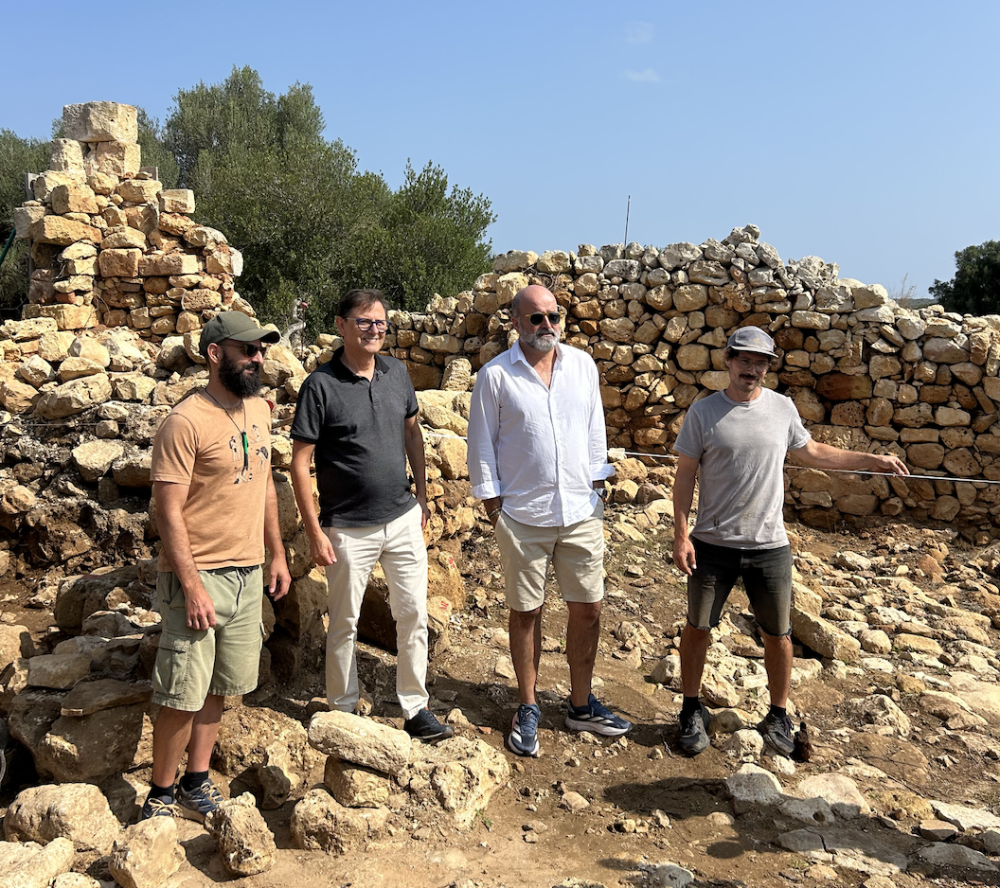
The excavation and restoration campaign in Torralba d'en Salort by the Amics del Museu de Menorca team has reached its third phase in 2024, yielding new information about this 15th and 16th century rural structure. The project, funded by the Consell Insular de Menorca and the Illes Balears Foundation, has focused on unearthing and restoring a construction that, until recently, was hidden under vegetation and believed to be the rubble of the ancient houses of Torralba.
On August 21, the co-directors of the project, Borja Corral and Carlos de Salort, presented the results of the campaign accompanied by the director of Cultural Affairs, Jaume Reurer, and the director of Torralba, Rafael Durán.
Rediscovering the past
The project has been developed in an area of the site which, although overshadowed by the monumental Talayotic remains of Torralba, has turned out to be of great historical value. Initially, historians and archaeologists such as Mascaró-Pasarius, Fernández-Miranda and others suggested that these structures could be the ruins of ancient dwellings or even a rural hermitage. However, after three excavation campaigns, the team has identified a late medieval rural dwelling, which could offer a new perspective on the life of the Christian repopulators in Menorca after the conquest of 1287.
An archaeological and documentary project
The intervention, co-directed by Borja Corral and Carlos de Salort, has combined archaeological excavation with an exhaustive study of Menorca's historical archives. The collaboration of restorers, conservators and historians such as Francesc Isbert and the historian specialising in the medieval period Jordi Saura, among others, has been essential to preserve the findings and to contextualise the structure within the history of the island.
Findings from the third campaign
A dozen students and graduates in History and Archaeology from various Spanish universities, together with volunteers from Menorca, are taking part in this third campaign, which will last until August 23. During the weeks of work, various objects have been discovered that offer an insight into everyday life in medieval Menorca. Among the finds are fragments of crockery, pottery and glass from the 16th to 18th centuries, some of them imported, reflecting the island's commercial connections.
In addition, the team has recovered agricultural tools and other objects that are evidence of traditional practices, such as religiosity and pipe smoking, which are deeply rooted in Menorcan culture.
A dialogue between archaeology and history
This project not only focuses on the excavation of a structure, but also seeks to understand the history of the repopulation of Menorca after the conquest of 1287. Historical documentation suggests that the house belonged to repopulating families from the Catalan-Aragonese crown, whose surnames, such as Gonyalons, Marqués and Villalonga, are still common in Menorca.
The future of the project
Although much remains to be discovered, indications are that the house was abandoned in the 17th century and then modified in the 18th or 19th century. However, the exact function of these modifications remains a mystery.
This project represents a unique opportunity to explore through archaeology the process of the repopulation of Menorca from 1287 onwards and, therefore, what is the origin of a large part of the Menorcans today.